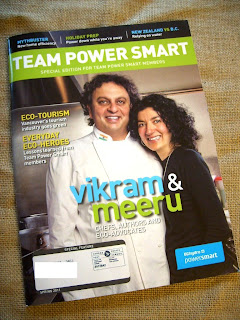 |
| from the WWF's website (link here) |
How will you spend Earth Hour this year?
Last year, I was dining out (at the Naam, actually), and the wait staff furnished us with plenty of candles and a little lantern, dimming the lights for the full 60 minutes.
This year - not sure yet! See if Wendy's home and invite her over for a Dutch Blitz tournie? I was going to finally finish reading Last Chance to See (Mark Carwardine and Stephen Fry, following in the footsteps of the late Douglas Adams... still sad about him going the way of the White Rhino and Yangtze River dolphin), but I finished it. (There is a BBC television series with Mark and Stephen that I have yet to see - catch it after Earth Hour).
 |
| I'm always looking for an excuse to play Dutch Blitz! |
So why bother with Earth Hour? Your typical no-fun, no-heart (sorry, that's harsh) naysayers will I'm sure scoff and ridicule the mere concept of Earth Hour (but they're always doing that about everything anyway), but "publicity stunts" and "gimmicks" like this do serve a very important purpose - they give the population at large the chance to participate in something global. It also serves to remind people that conservation begins with them, and that their actions (albeit a drop in a bucket) will add up over their lifetimes. By turning off the power, they are empowering themselves to take action against wasteful practices. They're also saving money - we pay for electricity after all! And having a tangible exercise that promotes thought about electrical consumption is probably quite beneficial - reminding people of how many useless appliances they have plugged in is never a bad thing.
 |
| Team Power Smart magazine Spring 2011 (yes, the paper publication is wasteful, I realise) |
So what effect does Earth Hour have then? According to BC Hydro, last year during Earth Hour, consumption in BC dropped over 1% (64.6 megawatts of energy - translating to about 1.4 million lights turned out). Only 1%? Sure - think of all the other things electricity does in our cities! Probably the largest drain on your electrical bill comes from heating your home. Think of all the office buildings whose thermostats aren't programmed to turn off at night - megawatts of wasted natural resources. Inefficient hot water heaters, old fridges and freezers, and stupidly inefficient small appliances (hair dryers are terrible!) - it all adds up (and quickly, too).
Want a real challenge? Turn down your thermostat by 4 to 5 degrees (Celsius, to my American friends - Fahrenheit is a larger scale!) and unplug your toaster (good idea for safety's sake anyway), put your computer system on a power bar and shut that off and compare your electrical bill next month! I'm not joking - it will be less money, and you'll notice. And if you don't feel like crunching the numbers, sign up for Team Power Smart (BC Hydro) and you can see graphs of your power consumption online.
An unexpected perk of Team Power Smart membership is a free recipe from Vikram Vij and Meeru Dhalwala! I'd post it, but I'd like to encourage you to register and get it for yourself instead.
 |
| My favourite cookbook authors are also eco-saavy. Nice! |
Despite the fact that I've been run off my feet this month (hence the drought re: posts - apologies), I have been looking forward to Earth Hour! A full hour where the nearly imperceptible (nearly) din and hum of electrical fields from computers, televisions and every other plug-in appliance is reduced to truly imperceptible - I can hardly wait.
Never one to abide by the adage that 'silence is golden' (much, much too talkative for that!), there is something obscenely refreshing about being able to 'unplug' with other considerate people in your block for a full hour.
Read a book, play a board or card game by candlelight, or just crack a bottle of wine and sit on the couch chatting (me and Steph, Earth Hour 2008). That was lovely. Put out some appies (still haven't gotten to the raw-food post but I will! Thanks for the reminder Sarah!), put your feet up, and realise that there's more to life than Facebook, Twitter and my blog (ha ha).
Want more ideas? Visit WWF's Earth Hour site and search by city to see what's going on! In Vancouver, La Terrazza, the Fairmont Vancouver (both), The Mosaic, Diva at the Met, the Delta hotel and Miku restaurant are all advertising Earth Hour candlelit dinners tonight (despite not being listed, you can bet The Naam will participate too - a cheaper and local option for Kits denizens).
Or check out EarthHour.org to design your own virtual lantern (for fun - there's a link on the top right of this blog) and see other suggestions on how to spend the hour (or longer!).
You can even spend an hour reflecting on how you will spend Earth Day (April 23rd, as always) this year! Get outdoors for a hike and a picnic is my suggestion. Or go for a bike ride and farm & garden tour on Westham Island. Or rent a pair of rollerblades and circumnavigate Stanley Park along the seawall!
Happy Earth Hour 2011!









